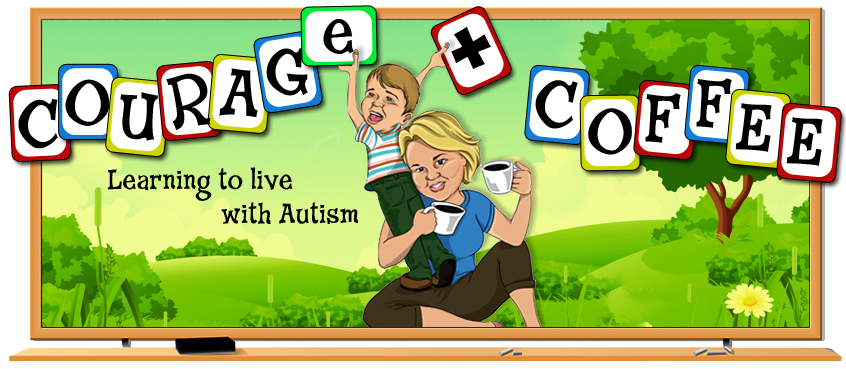Linda writes about how when the child has experienced one traumatic incident (from their point of view), it can cause a "default emotion". This means that now EVERY TIME that experience occurs, the emotion occurs because the child is remembering the first occurrence. Here's an example of this manifesting itself in our Ethan.
Books. He LOVES books. And he loves to read. One of his favorite books USED to be The Monster at the End of this Book with Grover. So, when we were in Walmart, and he saw the book Another Monster at the End of this Book with Grover AND Elmo, he could focus on nothing else but getting that new book.
 |
 |
So, we bought it, took it home, and read it. I'm not sure which one of us read it with Ethan for the first time, but it was the first & last time. Now, when I begin to take it off the shelf to read it with him, he panics. "No, no, no, no..." over & over again until I put it back on the shelf. Well, one night, I decided to read it with him anyway in order to see why he hates this book so much....especially after wanting it so badly in the store. We read the book just fine, but he did have his hands over his ears. But, honestly, he does that sometimes when I read books with him. But we started getting to the end of the book, and before I turned one certain page, he started panicking & saying "All Done, all done..." Here is the page he didn't want to read...
I could see why this page would bother him. In the story, Elmo is scaring Grover....and Ethan is very sensitive to those things. Ok....I get that. But NOW.....anytime we read a book with this "Batman" type of words (BAM, POP, YOWZA, etc...), he has a "default emotion" & responds with sadness & crying.
This past weekend, I got out some new books. One of them is Old MacDonald had a Woodshop by Lisa Shulman. He thought this book was funny because that isn't the normal Old MacDonald. And in this book, Old MacDonald is a girl....he thought this was too funny. We were really laughing while reading this book.
This book is the type that Ethan really enjoys reading because there is a pattern to it, and we keep adding on to the pattern. Here is a typical page out of the book.
However, on ONE of the pages, one of the animals hurts themselves while working with their tool, and the word "OUCH!" appears....but very small. The first time we read it, Ethan did fine. But NOW when we read it or he reads it on his own, he puts his sound-proof headphones on.....for that page only!?!?
So, this is what Linda was talking about is a "default" emotion. Every time Ethan sees....I think it's an all uppercase word followed by an exclamation point....he has a very strong reaction. So, Linda suggests the following strategies to help with this type of reaction. Linda also points out that this type of default emotion is common is all kiddos, but it's the frequency & intensity that makes the difference in children with autism. And I personally think that's true for most of Ethan's challenges.
Anyway, here are Linda's suggestions. We are going to try these, and see if they help Ethan work through his emotions regarding what I call "Batman" words.
"It’s easier to teach a NEW ROUTINE . . . than it is to change an OLD BEHAVIOR™ Default responses are hard to change. In comparison, new routines are easier to teach.
How do you teach a new routine?Visual strategies work really well. Think about how you teach any new routine. Here is a short list of possibilities.
• Create a mini-schedule for a specific time frame
• Write a social story about how to handle an event
• Make a video to demonstrate appropriate behavior for a situation
• Present a rule for a location or activity
• Provide some visual choices that will require appropriate behavior or appropriate responses
• Use a visual tool to assist communication in a difficult situation"
How do you teach a new routine?Visual strategies work really well. Think about how you teach any new routine. Here is a short list of possibilities.
• Create a mini-schedule for a specific time frame
• Write a social story about how to handle an event
• Make a video to demonstrate appropriate behavior for a situation
• Present a rule for a location or activity
• Provide some visual choices that will require appropriate behavior or appropriate responses
• Use a visual tool to assist communication in a difficult situation"





No comments:
Post a Comment